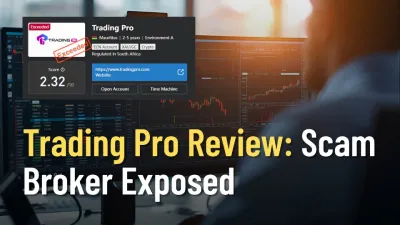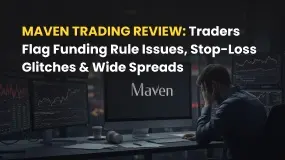简体中文
繁體中文
English
Pусский
日本語
ภาษาไทย
Tiếng Việt
Bahasa Indonesia
Español
हिन्दी
Filippiiniläinen
Français
Deutsch
Português
Türkçe
한국어
العربية
Phishing Attack: $6 Million Worth of GigaChad (GIGA) Tokens Gone!
Abstract:On 12th November, a crypto investor fell victim to a sophisticated phishing attack, losing $6 million worth of GigaChad (GIGA) tokens.

A crypto investor recently fell victim to a sophisticated phishing attack, losing $6 million worth of GigaChad (GIGA) tokens. This incident, which occurred on November 12, underscores the increasing risks of social engineering in the cryptocurrency space. The victim, known by the online alias “Still in the Game,” was targeted through a fraudulent Zoom link that appeared legitimate but was subtly altered to deceive the user.
The phishing attack began when the victim received what seemed to be a legitimate Zoom invitation. However, the link contained a minor but crucial variation in the URL, which redirected the user to a fake website designed to capture their wallet information. Once the hacker gained access to the victims wallet, they transferred 95.3 million GIGA tokens, equivalent to approximately $6.09 million.
On-chain analysis conducted by Scam Sniffer and Onchain Lens traced the stolen tokens as they were converted into more liquid assets. The hacker converted the GIGA tokens into 11,759 SOL (worth $2.1 million) and subsequently into stablecoins such as USDT and USDC. This conversion made it more difficult to trace and recover the stolen assets, as they were now spread across various wallets, including some on the KuCoin exchange.
The phishing attack was a stark reminder of how even a slight variation in a URL can mislead users and enable hackers to deploy malware that steals sensitive credentials. Scam Sniffer‘s analysis revealed the crucial difference in the fraudulent link—“us04-zoom[.]us” instead of the legitimate “us02web.zoom[.]us.” This small but costly mistake was enough to allow the hacker to access the victim’s crypto wallet.

Following the attack, the victim reported the incident to the FBI and engaged a forensic team to attempt to trace the stolen assets. However, given the pseudonymous nature of blockchain transactions and the fact that the funds were dispersed across multiple wallets, recovering the assets is expected to be a challenging task.
This attack is part of a growing trend of phishing scams within the cryptocurrency industry. In the fourth quarter of 2024 alone, over $60 million has been lost to phishing attacks. Scammers are increasingly using fake links, fraudulent signatures, and impersonation tactics to trick victims. In October 2024, a crypto venture capital fund was also targeted, resulting in the loss of $36 million worth of fwDETH tokens.
Phishing attacks in the cryptocurrency sector are becoming more frequent and sophisticated. According to CertiK, a cybersecurity firm, $753 million was lost to fraud in the third quarter of 2024, with phishing accounting for $127 million of that total. Crypto is now one of the most targeted sectors for identity fraud, second only to traditional financial industries.
To mitigate the risks of phishing and other cyber threats, crypto investors are advised to adopt several best practices. First and foremost, they should always verify the authenticity of URLs, especially those from unknown or unsolicited sources, to ensure they are not falling victim to fraudulent websites. Enabling Multi-Factor Authentication (MFA) is another crucial step, as it adds an extra layer of security beyond just relying on passwords. Additionally, investors should consider using hardware wallets, which are offline and significantly less vulnerable to online breaches compared to online wallets. Finally, exercising caution with emails and links is essential; investors should be particularly wary of unsolicited emails that create a sense of urgency or request personal information, as these are often tactics used by cybercriminals to deceive their targets. By following these best practices, investors can better protect themselves against the growing threat of cybercrime in the crypto space.

Disclaimer:
The views in this article only represent the author's personal views, and do not constitute investment advice on this platform. This platform does not guarantee the accuracy, completeness and timeliness of the information in the article, and will not be liable for any loss caused by the use of or reliance on the information in the article.
Read more

M&G Review: Traders Report Fund Scams, Misleading Market Info & False Return Promises
Applying for multiple withdrawals at M&G Investments but not getting it into your bank account? Do you see the uncredited withdrawal funds out of your forex trading account on the M&G login? Does the customer support service fail to address this trading issue? Does the misleading market information provided on this forex broker’s trading platform make you lose all your invested capital? Were you lured into investing under the promise of guaranteed forex returns? These issues have become highly common for traders at M&G Investments. In this M&G review article, we have echoed investor sentiments through their complaint screenshots. Take a look!

Trading Pro Review: Scam Broker Exposed
Trading Pro Review reveals scam alerts, fake offices, and withdrawal issues. Stay cautious with this unregulated broker.

FCA Warning List of Firms to Avoid: November 2025 Update
The Financial Conduct Authority (FCA) in the UK has published the FCA Warning List Firms to Avoid:- November 2025, alerting forex traders and investors about unauthorized brokers. These firms are operating without the necessary FCA approval. To safeguard your funds and avoid scams, be sure to check the full warning list below.

Maven Trading Review: Traders Flag Funding Rule Issues, Stop-Loss Glitches & Wide Spreads
Are you facing funding issues with Maven Trading, a UK-based prop trading firm? Do you find Mavin trading rules concerning stop-loss and other aspects strange and loss-making? Does the funding program access come with higher spreads? Does the trading data offered on the Maven Trading login differ from what’s available on the popular TradingView platform? These are some specific issues concerning traders at Maven Trading. Upset by these untoward financial incidents, some traders shared complaints while sharing the Maven Trading Review. We have shared some of their complaints in this article. Take a look.
WikiFX Broker
Latest News
2 Malaysians Arrested in $1 Million Gold Scam Impersonating Singapore Officials
Moomoo Singapore Opens Investor Boutiques to Strengthen Community
OmegaPro Review: Traders Flood Comment Sections with Withdrawal Denials & Scam Complaints
An Unbiased Review of INZO Broker for Indian Traders: What You Must Know
BotBro’s “30% Return” Scheme Raises New Red Flags Amid Ongoing Fraud Allegations
The 5%ers Review: Is it a Scam or Legit? Find Out from These Trader Comments
WikiEXPO Dubai 2025 Concludes Successfully — Shaping a Transparent, Innovative Future
Admirals Cancels UAE License as Part of Global Restructuring
Forex Expert Recruitment Event – Sharing Insights, Building Rewards
Exness Broker Expands in South Africa with Cape Town Hub
Currency Calculator



